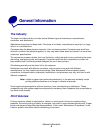
Print Material Testing
7
Print Material Testing
Choosing print materials can seem complex. Unfortunately, it is not possible to write a simple
“cookbook” explaining how to select print materials, because there are too many variables you need
to address for each specific application.
Be aware that critical factors at the vendor—such as the physical characteristics of the base stock
and the manufacturing processes—may change over time.
Print materials can significantly affect printer reliability and downtime. Using materials from
converters or vendors who are unfamiliar with laser printing may result in unsatisfactory print quality
or other printing problems.
Note: Once you have a successful design, test the print material before placing a large
order to avoid costly mistakes.
Your print materials supplier should be able to help develop your application, or solve a problem you
have with an existing application. In addition, Lexmark has worked with several suppliers and has
Business Partners in this field. Refer to the printer registration card, to information on the printer CD
or visit our Web site at www.lexmark.com\publications for technical assistance contact numbers.
Design Factors
Print materials all have measurable characteristics that you need to consider when selecting or
designing forms for your particular application.
Basis Weight
Not all basis weights are related to the same standard sheet size: for example, 70 lb material can be
lighter than 40 lb material if it is based on larger base size paper (see the “Card Stock Weights
Comparison Guide” on page 12). You may want to refer to the metric measurement of grams per
square meter (g/m
2
) for a more consistent way to compare weights.
Your printer can accept a wide range of stock weights, but materials either too light or too heavy can
cause printing problems. Heavy and/or thicker materials may not heat quickly enough in the fuser,
resulting in poor print quality. They may also feed less reliably or skew due to their weight or rigidity.
Conversely, lighter materials can wrinkle and jam in the printer due to low beam strength (stiffness).
Depending on the orientation of the stock as it feeds through the printer, you may need to request
that heavier materials be cut grain short or grain long to provide flexibility in paper path turns. See the
specifications for each printer for more precise recommendations.
Dimensions
All printers have print material dimension limitations. Refer to the printer documentation shipped with
your printer for details. You can sometimes redesign forms to overcome these limitations. For
example, if you use forms that are shorter than the minimum length supported by your printer, you
may be able to link two forms together when printing multiple forms. An optional Universally


















